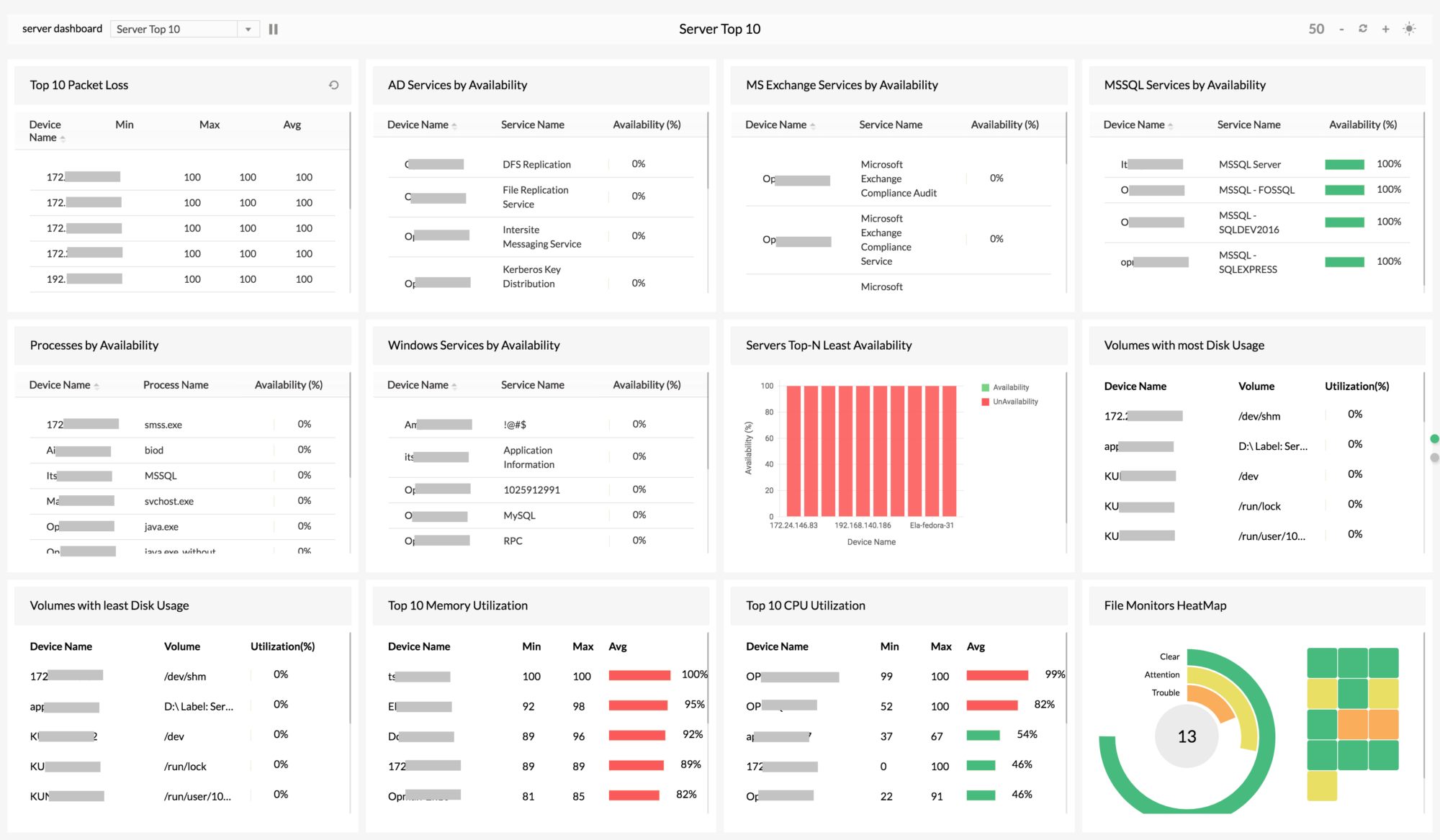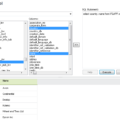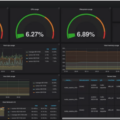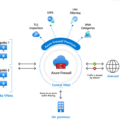Data monitoring is an essential part of any organization’s data management strategy. With the right tools, organizations can proactively maintain a high standard of data quality and avoid costly pre-processing before moving data to its destination. There are many different types of monitoring tools available for tracking and analyzing various aspects of system performance, such as servers, networks, databases, security, performance, websites, and applications.
In this blog post, we’ll take a look at some of the most popular data monitoring tools available and how they can help companies ensure that their systems are running smoothly and efficiently.
First up is Datadog – an all-in-one monitoring platform for cloud applications. Datadog enables users to monitor their infrastructure in real time and gives them access to detailed analytics on their application performance. It also offers powerful alerting capabilities that allow users to stay informed about any potential issues with their system’s performance.
Next is Ruxit – a powerful AI-driven monitoring solution designed to give IT professionals full visibility into their environment’s health. Ruxit offers real-time insights into resource usage, application performance metrics, and more. It also provides users with detailed reports on the state of their systems so they can quickly identify any potential problems or areas for improvement.
OverOps is another great tool for keeping an eye on your system’s performance. This tool provides deep insights into application errors by collecting data from all components of your system – from the database to the browser and beyond – so you can quickly identify issues and fix them before they become major problems.
Rollbar is a great choice for managing errors in web apps and services through automated error tracking and reporting capabilities. This tool allows developers to quickly identify errors in their codebase so they can be fixed promptly. Rollbar also makes it easy to track errors across different environments so developers have a better understanding of where in the codebase bugs may be cropping up from time to time.
Sensu is yet another great tool for keeping tabs on system performance across multiple environments like cloud infrastructure or physical servers. The Sensu platform provides comprehensive event tracking capabilities so you know exactly what’s happening across your entire IT estate in real-time. It also has powerful alerting features that make sure you don’t miss out on any critical events that may be affecting system health or availability.
The ELK Stack (Elasticsearch, Logstash & Kibana) is another comprehensive logging solution for managing large amounts of log data from all kinds of sources such as web servers or databases within your environment. It enables users to visualize logs in real time through interactive dashboards so they can easily spot patterns or trends within their systems over time without having to manually search through logs themselves.
Lastly, there’s Graphite which is a powerful open-source visualization platform designed specifically for monitoring large amounts of time series data. Through its intuitive interface, Graphite allows users to easily create custom graphs that display useful insights about how their systems are performing over time. This makes it ideal for spotting potential issues with infrastructure components before they become problematic.
All these monitoring tools provide valuable insight into how an organization’s IT infrastructure performs – allowing them to quickly identify issues before they become major problems while ensuring that their systems remain secure, stable, and reliable. To ensure maximum success, organizations should consider implementing multiple solutions so that they have full visibility into all aspects of their environment at once.

Data Monitoring Tool: An Overview
Data monitoring tools are applications used to track and analyze data in order to assess the quality of data stored within a system. These tools can be used to identify and address any issues with data accuracy, completeness, validity, or consistency. Data monitoring tools can also help detect potential errors or anomalies that may have occurred during the process of collecting, storing, and managing data. With these tools, organizations are able to ensure their stored data is up-to-date and accurate at all times—reducing the need for manual pre-processing. They can also be used to track any changes made to the data over time and identify trends in usage patterns or areas that require further investigation.
Seven Monitoring Tools
The seven monitoring tools mentioned are Datadog, Ruxit, OverOps, Rollbar, Sensu, ELK Stack, and Graphite.
Datadog is a cloud-based monitoring platform that provides both infrastructure and application performance metrics. It also offers real-time analytics to help identify problems before they affect users. It allows users to collect and analyze metrics from across their entire stack in one place.
Ruxit is an AI-powered monitoring tool that offers automated root cause analysis for application performance issues. It helps teams quickly detect and fix performance issues with its deep insights into application behavior and system health.
OverOps is an automated code quality monitoring tool that helps teams detect and diagnose errors in production code. It allows teams to gain visibility into their software’s health by tracking changes in code over time and providing detailed information about errors as they occur.
Rollbar is an error monitoring platform that tracks errors in real-time, allowing developers to quickly identify and fix bugs before they impact users. It also offers detailed stack traces for each error, so developers can understand the root cause of the issue.
Sensu is an open-source event-driven automation platform that enables teams to monitor applications, services, and infrastructure across multiple cloud providers and on-premise environments. It provides real-time performance visibility with alerting capabilities for proactively addressing any issues detected during operation.
ELK Stack (Elasticsearch, Logstash & Kibana) is a powerful log management suite for collecting and analyzing log data from distributed systems in real-time. It helps organizations monitor their applications’ performance more efficiently by providing insights into how various components are interacting with each other over time/in different environments.
Graphite is a powerful open-source monitoring tool for collecting data about systems or applications over time. It allows organizations to track key metrics such as latency or throughput levels at any given point in time with minimal effort on their part.
Basic Tools for Monitoring
1. Network Monitoring Tools: These tools are used to monitor and analyze the performance of a network. They provide real-time insights into network performance, including latency, bandwidth usage, packet loss, and more. Examples of these types of tools include SolarWinds Network Performance Monitor, Wireshark, and Nagios.
2. Application Performance Monitoring Tools: These tools are used to monitor the performance of applications across a variety of platforms, including web applications, mobile apps, and software-as-a-service (SaaS) applications. Examples include AppDynamics, New Relic, and Datadog APM.
3. System Monitoring Tools: These tools are used to monitor the performance of physical or virtual systems, such as servers and other IT infrastructure components like storage arrays and databases. Examples include Zabbix, Icinga, and Splunk Enterprise.
The Benefits of Using Digital Monitoring Tools
Digital experience monitoring (DEM) tools are software applications that enable organizations to monitor, measure and analyze the performance of their digital experiences. These tools provide insights into how users interact with web and mobile applications, websites, and other digital services. DEM tools enable organizations to identify and address performance issues from a user-centric perspective. By measuring key performance indicators (KPIs) such as page loading times, error rates, response times, and other metrics, these tools can help pinpoint the root cause of any digital experience problems quickly and accurately. Additionally, DEM tools can be used to optimize digital transactions and customer journeys for improved customer satisfaction.
The Benefits of Using Microsoft Monitoring Tool
Microsoft Monitoring is a comprehensive set of tools designed to help you monitor the health, performance, and configuration of your Microsoft Azure, Hyper-V, and Windows Server environments. From the operating system to applications (Office 365, Exchange, SharePoint, etc.), services (Active Directory, IIS, DNS, DHCP, etc.), and more—Microsoft Monitoring provides real-time insights into the health of your IT infrastructure. It offers real-time alerts that allow you to respond quickly to potential issues before they become serious problems. Additionally, Microsoft Monitoring provides detailed performance data so you can identify and address areas for improvement in order to improve system performance. Finally, it provides the ability to monitor configuration changes so you can easily detect any unauthorized or unexpected changes in your environment.
Conclusion
In conclusion, data monitoring tools are an essential part of any organization’s success and security. They provide real-time insight into the performance, reliability, and security of the various systems and applications used within the organization. By using these tools, organizations can proactively maintain a high standard of data quality while avoiding costly pre-processing of data. Furthermore, they can detect errors and defects quickly to improve performance. There are many different data monitoring tools available, each with its own unique features and benefits. Ultimately, it is up to the organization to decide which tool is best suited for their needs based on their specific requirements and budget constraints.








